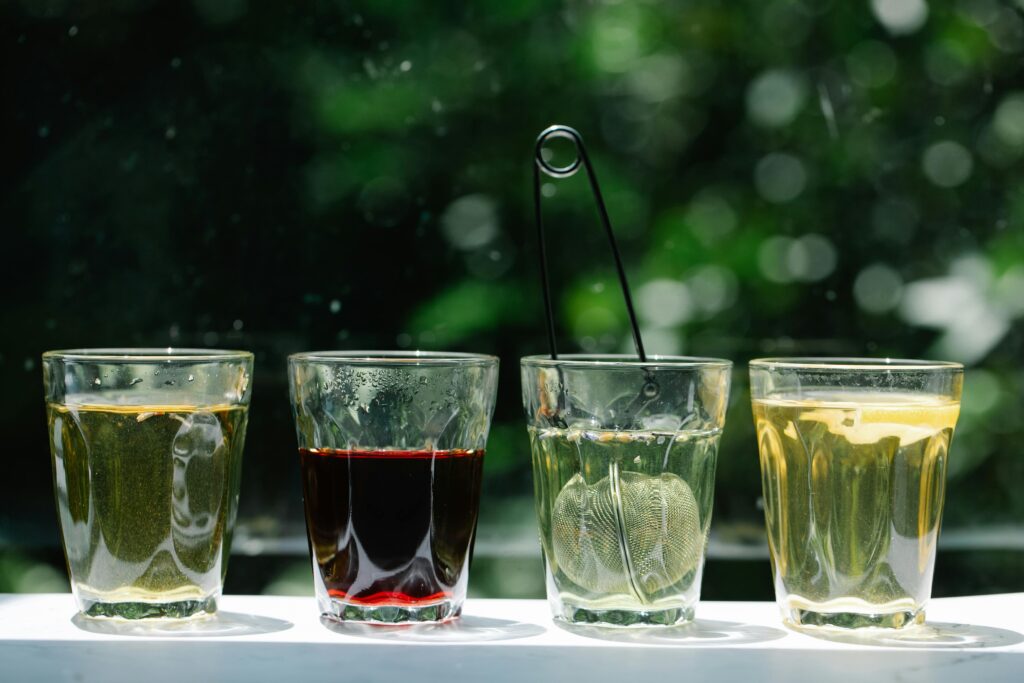In today’s fast-paced world, stress and anxiety have become an everyday challenge for many. While there are numerous coping mechanisms, one of the most natural and soothing remedies is herbal tea. Crafting your own anti-anxiety tea blend at home not only allows you to choose ingredients tailored to your needs but also turns tea-making into a calming ritual in itself.
Why Tea Can Help Reduce Stress and Anxiety
The Science Behind Herbal Teas and Relaxation
Herbal teas are packed with natural compounds like flavonoids, essential oils, and amino acids that influence the brain’s neurotransmitters. Ingredients such as chamomile and lavender are known to boost gamma-aminobutyric acid (GABA), a neurotransmitter that helps calm nervous activity.
Benefits of Drinking Herbal Tea for Mental Health
- Promotes relaxation without drowsiness
- Improves sleep quality
- Balances mood swings
- Supports digestion, which indirectly reduces stress
- Offers a caffeine-free way to unwind
Essential Herbs for Anti-Anxiety Tea Blends
Chamomile: The Classic Calming Herb
Chamomile is perhaps the most famous stress-relieving herb. Known for its delicate floral notes, it soothes the nervous system and promotes restful sleep.
Lavender: A Fragrant Relaxation Aid
With its aromatic fragrance, lavender helps ease tension headaches, reduce anxiety, and promote a sense of calm.
Lemon Balm: The Gentle Mood Uplifter
This citrus-scented herb is a natural mood stabilizer that helps reduce restlessness and nervousness.
Passionflower: Nature’s Natural Sedative
Traditionally used to treat insomnia, passionflower works wonders for calming an overactive mind.
Valerian Root: The Sleep-Inducing Herb
Valerian is best for nighttime tea blends as it encourages deep, restorative sleep.
Green Tea and L-Theanine for Calm Focus
Unlike other herbs, green tea contains L-theanine, an amino acid that promotes relaxation while maintaining alertness.

Choosing the Right Base for Your Tea Blend
Loose Leaf vs. Tea Bags
Loose-leaf teas generally contain higher-quality herbs compared to pre-packed tea bags. They allow more flavor and beneficial oils to infuse.
Organic vs. Non-Organic Ingredients
Organic herbs are recommended since they’re free of pesticides, which ensures both safety and enhanced taste.
Step-by-Step Guide: How to Make Your Own Anti-Anxiety Tea Blend
Equipment and Tools You’ll Need
- Mortar and pestle (for crushing herbs)
- Airtight glass jar (for storage)
- Measuring spoons
- Tea infuser or strainer
Basic Tea Blend Recipe for Beginners
Here’s a simple recipe to start with:
- 2 tbsp chamomile
- 1 tbsp lemon balm
- 1 tbsp lavender
- ½ tbsp passionflower
Mix all herbs gently and store in an airtight jar.
Customizing Your Blend with Different Herbs
You can experiment by adding valerian root for sleep, or green tea if you want daytime calm without drowsiness.
Storing Your Homemade Tea Blend Properly
Store in a cool, dark place in a glass jar. Herbs should be consumed within 6–12 months for maximum freshness.
Brewing the Perfect Cup of Anti-Anxiety Tea
Water Temperature and Steeping Time
- Chamomile & lavender: 5–7 minutes at 200°F (93°C)
- Green tea: 2–3 minutes at 175°F (80°C)
Adding Natural Sweeteners and Enhancers
Honey, cinnamon, or a squeeze of lemon can enhance flavor without overpowering the herbs.
Best Times to Drink Anti-Anxiety Tea
- Morning: Green tea blends for focused calm
- Afternoon: Lemon balm or lavender tea to ease stress
- Evening: Chamomile or valerian root tea for deep relaxation
Safety Tips and Precautions with Herbal Teas
Possible Side Effects and Interactions
Some herbs may interact with medications like antidepressants, blood thinners, or sedatives. Always consult a healthcare provider if you’re on medication.
Who Should Avoid Certain Herbs
- Pregnant women should avoid valerian and passionflower.
- People with allergies to ragweed should avoid chamomile.
FAQs About Homemade Anti-Anxiety Tea
Q1: How often can I drink anti-anxiety tea?
You can safely enjoy 1–3 cups daily, depending on the herbs used.
Q2: Can I mix all herbs together in one blend?
Yes, but it’s best to limit blends to 3–4 herbs for balanced flavors and effects.
Q3: How long does homemade tea last?
Stored properly, your blend should last up to a year.
Q4: Can I drink it if I’m on prescription medication?
Consult your doctor first, as some herbs may interfere with medicines.
Q5: What’s the best herb for sleep anxiety?
Valerian root and chamomile are excellent choices for nighttime relaxation.
Q6: Do I need sweeteners in my tea?
Not necessarily—many herbs are naturally pleasant, but honey or stevia can be added.
Conclusion: A Relaxing Ritual You Can Create at Home
Making your own anti-anxiety tea blend is more than just a DIY project—it’s a holistic practice that encourages mindfulness and self-care. With calming herbs like chamomile, lavender, and lemon balm, you can craft a blend that not only eases anxiety but also turns every cup into a soothing ritual.
For those seeking a natural, affordable, and personalized way to manage stress, homemade herbal teas are a safe and effective option. Start small, experiment with different herbs, and soon you’ll find the perfect anti-anxiety tea blend that works for you.
For more information on herbal remedies, you can explore trusted resources like National Center for Complementary and Integrative Health (NCCIH).
read more:
- Herbal vs. CBD Teas: Natural Ways to Ease Anxiety
- Why Tea Rituals Help Reduce Stress and Anxiety
- Valerian Root Tea for Sleep: Natural Stress Relief
- Can Herbal Teas Replace Anxiety Meds? Science Explains
- Herbal Teas That Help Anxiety: A Comparison
- Passionflower Tea for Anxiety: A Natural Solution
- tea for anxiety
- best teas for sleep
